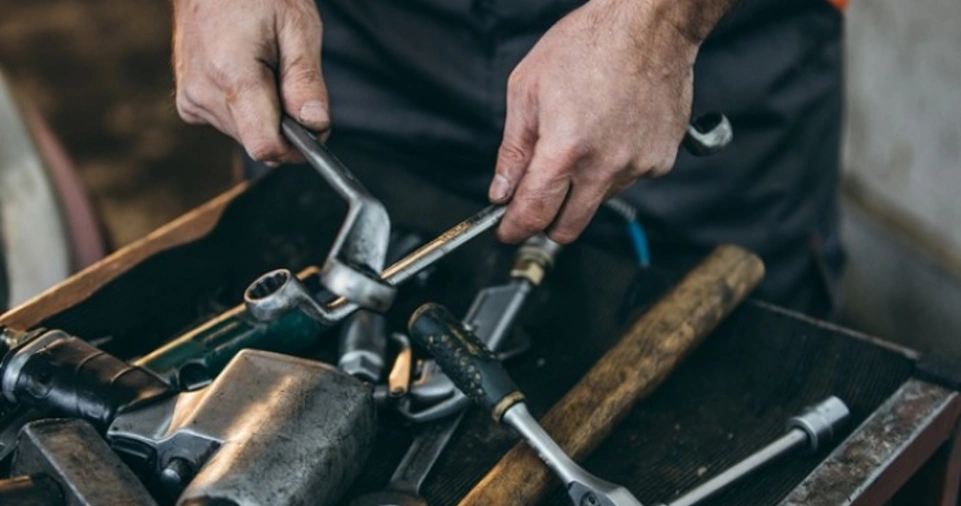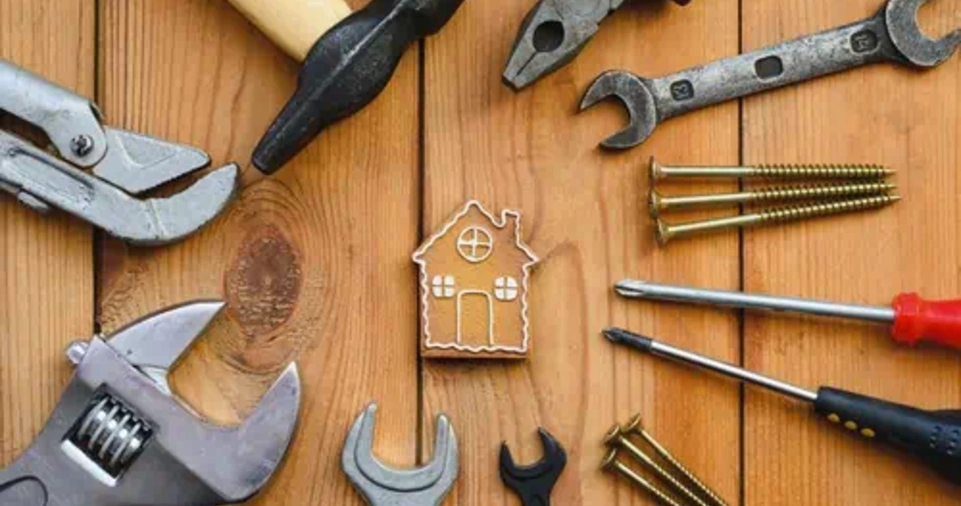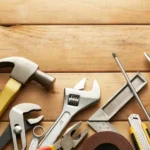Keeping your tools in top working condition is essential for any DIY enthusiast or homeowner.
Tools can malfunction due to wear and tear, improper use, or lack of maintenance. Instead of discarding faulty tools, many common malfunctions can be repaired at home with basic knowledge and a few essential supplies.
This guide will help you troubleshoot and fix common tool issues, ensuring they last longer and perform efficiently.
Common Hand Tool Malfunctions and Fixes
Hand tools are essential for various household repairs. However, they can develop problems over time. Below are some common issues and how to fix them:
Hammer with a Loose Handle
| Problem | Cause | Solution |
|---|---|---|
| Loose handle | Wear and tear | Apply wood glue or insert a wedge into the hammerhead |
| Splitting wooden handle | Excessive force | Replace the handle with a new one |
| Rusted hammerhead | Exposure to moisture | Soak in vinegar, scrub with a wire brush, and apply oil |
Screwdriver with a Worn Tip
| Problem | Cause | Solution |
|---|---|---|
| Worn tip | Overuse or improper use | Use a metal file to reshape the tip or replace it |
| Handle slipping | Poor grip or wear | Wrap grip tape around the handle or replace it |
| Bent shaft | Excessive force applied | Carefully straighten in a vise or replace the tool |
Pliers with Rusty Joints
| Problem | Cause | Solution |
|---|---|---|
| Stiff movement | Rust and dirt buildup | Apply lubricant and clean with a wire brush |
| Loose grip | Wear on the jaws | Replace the tool or use grip-enhancing tape |
| Misaligned jaws | Dropping or heavy impact | Realign by tightening the pivot screw or replacing parts |
ALSO READ: How to Use CRM Software to Manage Your Customer Relationships?
Common Power Tool Malfunctions and Fixes

Power tools are more complex and require extra care when troubleshooting. Below are some common malfunctions and their respective fixes:
Drill Won’t Start
| Problem | Cause | Solution |
|---|---|---|
| No power | Faulty power cord or dead battery | Check and replace the power cord or charge/replace the battery |
| Overheated motor | Continuous use | Allow the drill to cool before use |
| Carbon brushes worn out | Long-term use | Replace the brushes following manufacturer instructions |
Saw Blade Dull or Not Cutting Properly
| Problem | Cause | Solution |
|---|---|---|
| Blade is dull | Excessive use | Replace or sharpen the blade |
| Blade wobbles | Loose mounting | Tighten the blade securely |
| Burn marks on wood | Dull blade or too much friction | Sharpen or replace blade, ensure proper feed rate |
Angle Grinder Overheating
| Problem | Cause | Solution |
|---|---|---|
| Overheating motor | Blocked ventilation | Clean vents and ensure airflow |
| Worn brushes | Long-term use | Replace carbon brushes |
| Grinder shuts off suddenly | Overload protection triggered | Allow tool to cool down, reduce workload |
ALSO READ: How to Fix Common Lag Issues While Gaming Online?
How to Maintain Tools to Prevent Malfunctions?

Preventative maintenance extends the life of your tools and reduces repair needs. Follow these maintenance tips:
Hand Tool Maintenance
- Clean after use – Wipe tools with a dry or slightly damp cloth to remove debris.
- Store properly – Keep tools in a dry, organized space to prevent rust and wear.
- Sharpen blades – Regularly sharpen cutting tools like chisels and saws to maintain efficiency.
- Apply oil to metal parts – Prevent rust by occasionally applying light machine oil.
- Check fasteners – Periodically inspect screws, rivets, or joints and tighten if necessary.
Power Tool Maintenance
- Lubricate moving parts – Apply oil or grease to prevent wear.
- Inspect cords and batteries – Check for frayed wires or battery degradation.
- Clean air vents – Dust and debris can clog air vents, causing overheating.
- Test safety features – Ensure power tools’ safety guards and switches work correctly.
- Store batteries properly – Keep in a cool, dry place to extend battery life.
Safety Tips When Repairing Tools at Home
Safety should always be a priority when handling tools, whether repairing or using them. Here are some essential safety tips:
- Disconnect power tools before repairing or maintaining them.
- Wear protective gear such as gloves and safety glasses.
- Work in a well-lit area to ensure visibility.
- Use the right tool for the job to prevent damage and injury.
- Follow manufacturer instructions for tool maintenance and repairs.
- Test tools before use after performing any repairs.
- Keep a fire extinguisher nearby when working with electrical repairs.
- Avoid working with wet hands to prevent electric shocks when handling power tools.
When to Seek Professional Help
While many tool malfunctions can be repaired at home, some situations require professional intervention:
- Severe motor failure in power tools.
- Broken internal components that require specialized knowledge.
- Electrical issues beyond basic wire replacement.
- Warranty concerns where professional service is recommended to maintain coverage.
- Gas-powered tools malfunctioning which require professional calibration and repair.
Advanced DIY Tool Repairs

If you are comfortable with more advanced repairs, here are some additional techniques:
Replacing a Power Tool Switch
- Disconnect the tool from power.
- Open the casing and locate the switch.
- Note wiring connections or take a picture.
- Remove the faulty switch and install the new one.
- Reassemble and test before use.
Sharpening a Circular Saw Blade
- Secure the saw blade in a vice.
- Use a diamond file to sharpen each tooth evenly.
- Maintain the correct angle to ensure smooth cutting.
- Reinstall and test the saw.
Repairing a Frayed Power Cord
- Cut out the damaged section.
- Strip back insulation and expose wires.
- Use heat shrink tubing and reconnect wires securely.
- Test to ensure proper power flow.
ALSO READ: How to Promote Your Blog on Social Media Effectively?
Conclusion
Repairing common tool malfunctions at home is a practical skill that saves money and extends the lifespan of your tools.
By following this guide, you can diagnose and fix various hand and power tool issues, ensuring they remain in optimal working condition.
Regular maintenance and proper usage further prevent malfunctions, making your DIY projects more efficient and hassle-free.
By understanding how to troubleshoot and repair your tools, you not only enhance your skills but also contribute to sustainability by reducing waste. Keep your tools well-maintained, and they’ll serve you for years to come!







